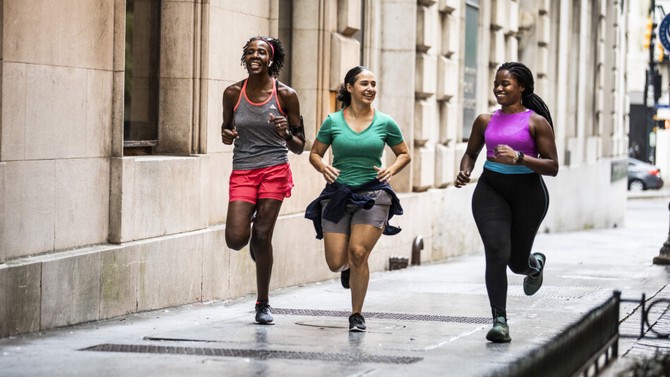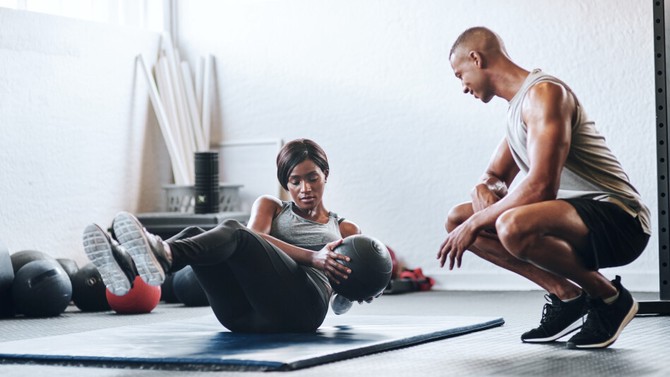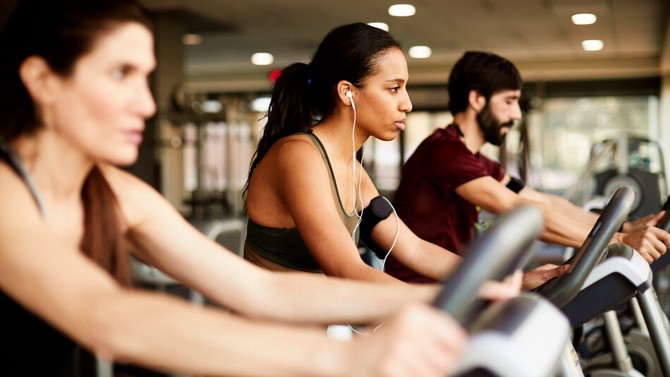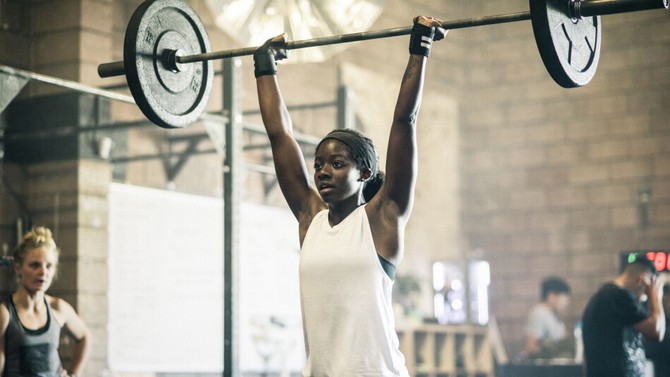The Best Things to Eat Before Working Out
We sort through the confusing advice about pre-workout snacks to tell you what you need and when.
By Corrie Pikul

Photo: MoMo Productions/Getty Images
The workout: A vigorous morning run or swim.
If you're going to get your heart pumping for at least 30 minutes, have a snack first, says Christine Rosenbloom, PhD, the sports dietician for Georgia State University athletics. You've been fasting all night, so you need some carbohydrates to top off your depleted glycogen stores. The ideal snack will be low in fat and protein, which take longer to digest, and have about 30 grams of carbohydrates.
The snack: A tube of energy gel, a packet of instant oatmeal (Rosenbloom says southerners like her may prefer grits) made with water, one cup of dry cereal or a plain mini-bagel. Wash this down with a 4-ounce glass of water.
When: Your body will be able to convert these carbs into energy if you eat 15 to 30 minutes before your workout. Don't worry if you're headed to the pool: The belief that you'll cramp up is an old wives' tale, says Rosenbloom.

Photo: Thomas Barwick/Getty Images
The workout: A predawn yoga or Pilates class.
For these types of low-intensity activities, a snack isn't necessary (unless you wake up famished), but hydration is. "Most people think, 'I won't be sweating much, so I don't need to drink anything,'" says Rosenbloom. But dehydration can make the workout feel much harder than it really is. A 60- to 90-minute class is a long time to go without water.
The snack: 8 ounces of a low-calorie sports drink, a full-calorie sports drink cut with water, or fruit juice diluted with water. These will still give you some carbohydrates for energy, and the electrolytes in the sports drink are a must if you're attending an intense hot-yoga class.
When: On your way to the yoga studio (the body digests liquids very quickly).

Photo: kupicoo/Getty Images
The workout: A lunchtime abdominal class.
If you didn't eat a decent breakfast (say, muesli, fruit and yogurt, or oatmeal with nuts), you'll need a bite of something—not because you can't get through the class but because waiting until you get back to your desk will make you so hungry that you'll probably overeat, says Rosenbloom.
The snack: A few whole-grain crackers (again, 30 grams is the magic number of carbs) and maybe a piece of string cheese. The key to not letting your snack sabotage your weight is to count these bites toward your lunch. So if you opt for cheese now, skip piling it on your turkey sandwich.
When: 20 minutes before hitting the mat.

Photo: Tempura/Getty Images
The workout: A sweat-inducing evening spin class.
Research shows that if you're working at high intensity on an empty stomach, some of the fuel may come from your muscles. You also want to give yourself enough time to digest the food so you don't develop cramps. Use the hunger scale to help you decide what to eat. If you had an early or light lunch and rank your hunger at a one to a four, you're ready for a snack. If you're still at a five to a seven, you can probably hold off until dinner.
The snack: Half a sports bar (skip the high-fiber kind, which may cause a detour to the bathroom), one banana, one cup of applesauce or a few chocolate-covered pretzels (the small amount of caffeine and sugar provides a pick-me-up).
When: Eating 15 to 30 minutes before class will give your body enough time to digest so you won't feel uncomfortable.

Photo: Corey Jenkins/Getty Images
The workout: Boot camp or a weight session with your trainer.
Pre-workout carbs give you energy, so have your 30 grams if you're really hungry. However, it's what you eat after the strength-training session that really matters—even more than after cardio workouts. Protein helps repair muscles and provides raw material for building new ones, says Rosenbloom. Aim for 10 to 20 grams of high-quality protein (not the fried chicken nuggets she's seen some college athletes sneak into the locker room).
The snack: Low-fat chocolate milk, trail mix with nuts and raisins, or a protein shake.
When: Within an hour after your toning workout. "That's when your muscles are the most receptive to taking in the nutrients from food," says Rosenbloom.
Published 01/10/2012

